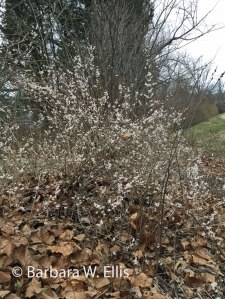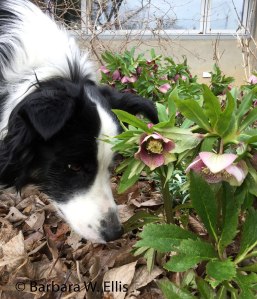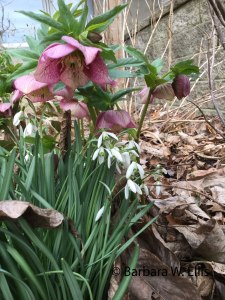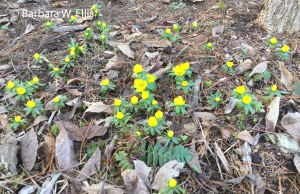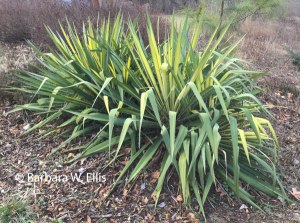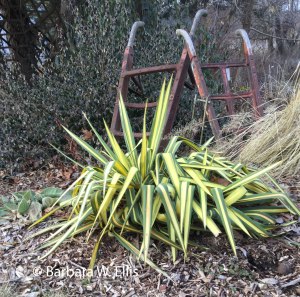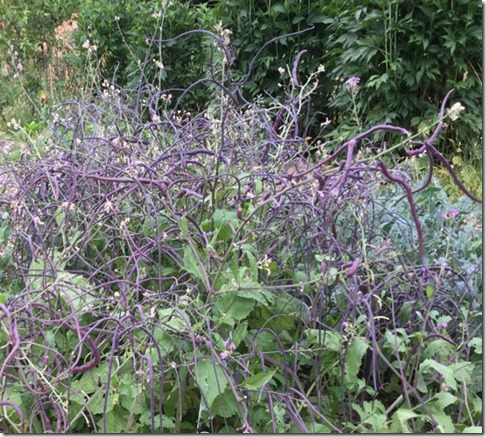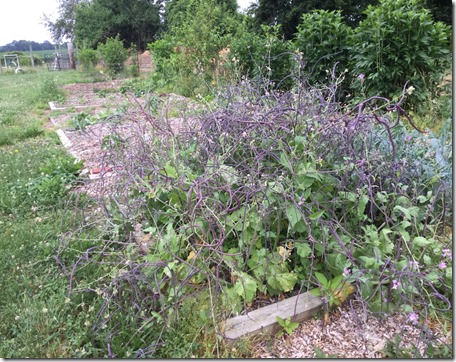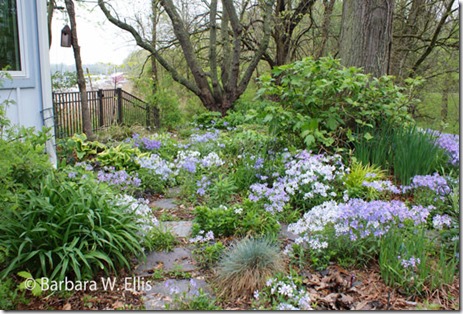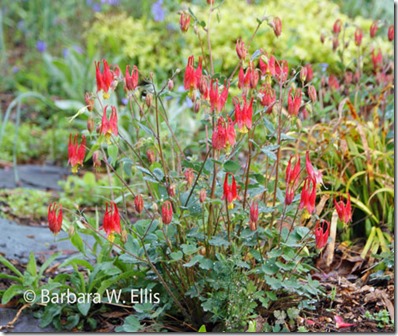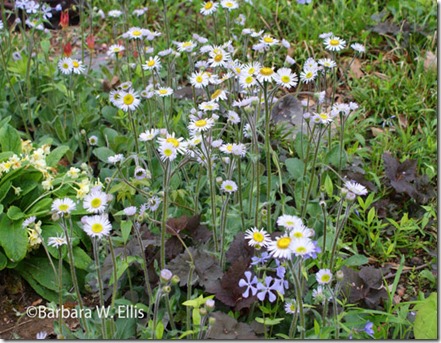I made my annual trip to Mt. Cuba Center in Hockessin, Delaware, recently. Happily, it was on one of those glorious days we have had this summer when the humidity was low and the temperatures were summery, but not too hot. If you haven’t been to Mt. Cuba before, or if you haven’t made the trek in a few years, I hope this post will serve as some inspiration.

No visit is complete without a trek down to see what is in bloom around the ponds. Cardinal flower (Lobelia cardinalis) was in full flower during my visit the second week of August. At the other end of the pond, native lilies, pitcher plants, and golden club (Orontium aquaticum) crowded along the edge of the water.

As I am strolling through the garden, I always use my camera to record ideas for new ways to use favorite plants as well as new combinations. Mt. Cuba is one of the only places you will be able to see native plants used in conventional plantings, such as beds and borders. This ground cover planting features seersucker sedge (Carex pantaginea).
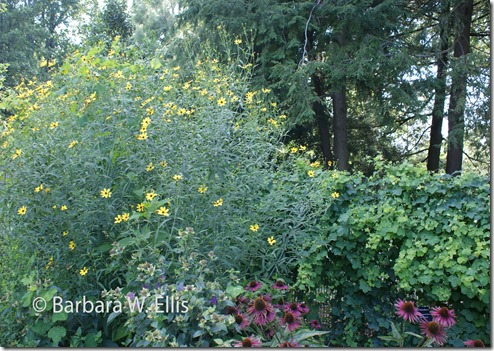
A camera is also invaluable for recording plant combinations such as the one above: tall coreopsis (Coreopsis tripteris ‘Gold Standard’) with yellow passionflower (Passiflora lutea), and purple coneflower (Echniacea ‘Pica Bella’).
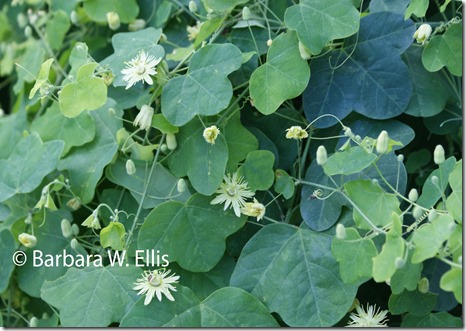
Yellow passionflower has tiny flowers that are about 1 inch across. Despite their small size, they are really pretty set against the handsome foliage and are produced in abundance.
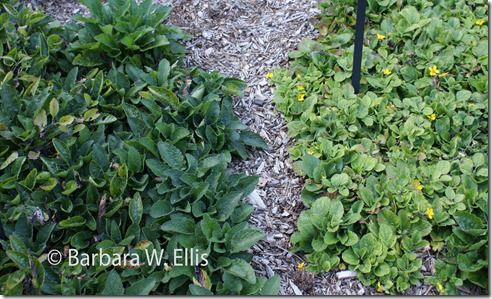
Hands down, my favorite part of Mt. Cuba is the trial garden. Whether I am looking for new ideas of plants to try or new sites to try old favorites, being able to compare performance is invaluable. A visit to a public garden is especially useful when your own garden is looking tired or lacking in color, because you will find lots of ideas for flowers or great foliage that can perk up your own plantings. This is especially true of Mt. Cuba, because you can compare the performance of cultivated forms of various native plants, plus evaluate native plants in cultivation that you may not have seen before.
The shot above shows two cultivars of green-and-gold, also called golden star (Chrysogonum virginianum). The cultivar ‘Allen Bush’, is on the right, and ‘Norman Singer’s Form’ is on the left. During my visit in August, ‘Allen Bush’, the better known form, was still blooming, but ‘Norman Singer’s Form’, also has a lot to offer because of its richer green leaves and thicker foliage.
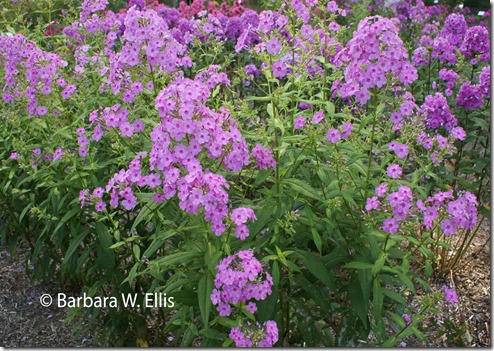
This is the last year of Mt. Cuba’s phlox trial, and quite a few of the cultivars in the trial have given up the ghost. ‘Shortwood’ garden phlox (Phlox paniculata ‘Shortwood’) still looked wonderful and appears to be one of the winners. (Mt. Cuba will publish the results of the trial once it has been completed.) ‘Jeana’ was another standout. In years to come, the trial winners inevitably find their way into borders and other plantings throughout the garden.
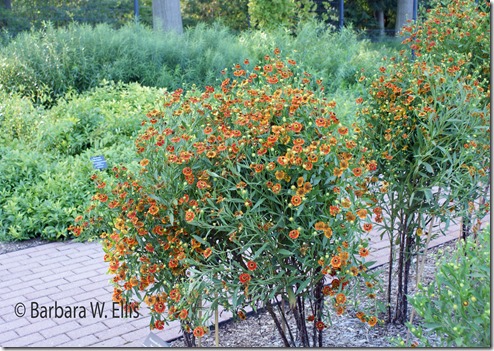
This is the first year of the garden’s three-year Helenium trial. Heleniums have unfortunately been saddled with the common name sneezeweed, a name derived from the fact that the disk florets were once dried and used as snuff. Whether you think of them as heleniums or sneezeweeds, they are beautiful fall-blooming natives. After just one walk through the rows, I had already noted down a couple of plants I want to try in my own garden. Helenium ‘Flammendes Katchen’ is one of them.
Heleniums need full sun and average to moist soil. Too much fertilizer, or soil that is too rich, leads to stems that flop if they are not staked. Cut plants back in mid June to encourage branching, more flowers, and shorter, more upright stems.
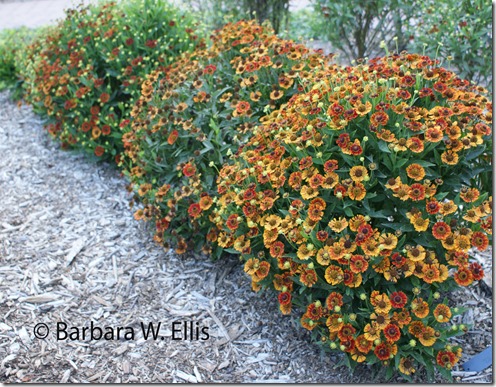
Some dwarf hybrids are also included in the trial. So far, ‘Salsa’ is my favorite!
As always, so many plants, so little time!

